The foolish optimism of thinking dark matter is about to be detected

Just because we know it’s real doesn’t mean it’s easy to create in a lab.
“For me the best answer is not in words but in measurements.” –Elena Aprile
Atoms, molecules, human beings, the Earth, the Sun, stars, galaxies, gas, dust and plasma in the Universe all have something in common: they’re all made of the same fundamental particles. Yet if you break everything we know, see and perceive down into its smallest constituents, you can only explain about 15% of the total mass in the Universe. Without emitting or absorbing light, 85% of the Universe is mysterious, visible only through its gravitational effects on the luminous, interacting matter we know. This dark matter has an overwhelming suite of astrophysical evidence for it, but seeing something from afar isn’t the same as creating, detecting and analyzing it in a lab for ourselves. Despite the fact that there are a great many experiments searching for dark matter, it would take a foolish level of optimism to expect any of them to be successful anytime soon.
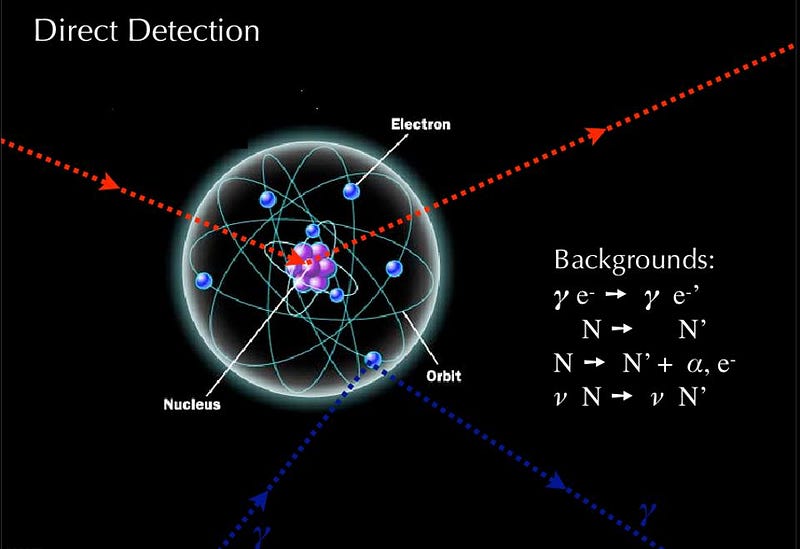
- Direct creation of dark matter particles via high-energy collisions, such as at the Large Hadron Collider. Missing energy and momentum, distinct from the neutrino signature, would be a surefire sign of dark matter.
- Experiments looking for a telltale sign of annihilations of dark matter particles with other dark matter particles, where photons of a specific energy corresponding to no known fundamental particles are produced.
- Nuclear recoil experiments, where dark matter particles collide with atomic nuclei, producing a unique combination of additional energy and momentum signatures that get imparted to the nuclei.
- And electromagnetic resonance experiments, where photons in an electromagnetic cavity can be coaxed into either interconverting or colliding with dark matter particles.

Many scientists are performing these experiments and hoping for success, as well they should. But the ones predicting success are deluding themselves with wishful thinking.
The observational evidence for dark matter indicates that there are slow-moving massive particles throughout the Universe, outmassing normal matter by a 5:1 ratio. The evidence shows up in how galaxies cluster together, in the fluctuations in the Big Bang’s leftover radiation, how individual galaxies move and rotate, how the large-scale structure of the Universe forms and in how galaxy clusters collide.
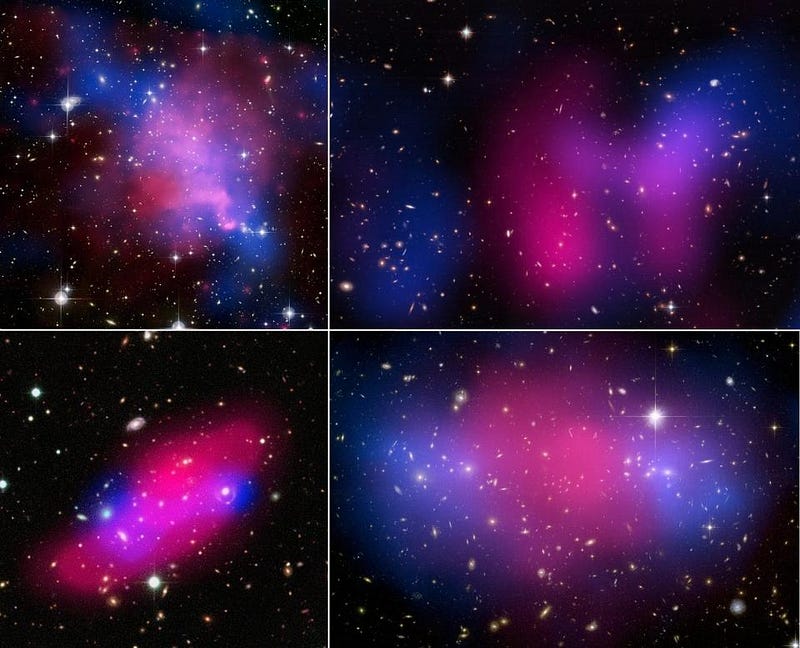
The evidence for dark matter’s existence is overwhelming; either dark matter exists or a huge slew of gravitational phenomena are fundamentally misunderstood and in need of a theoretical overhaul. But in every direct way, observations indicate that dark matter is invisible. It doesn’t appear to interact with itself, with light, with normal matter or with any of the known, discovered particles at all. Except, that is, through the gravitational force.
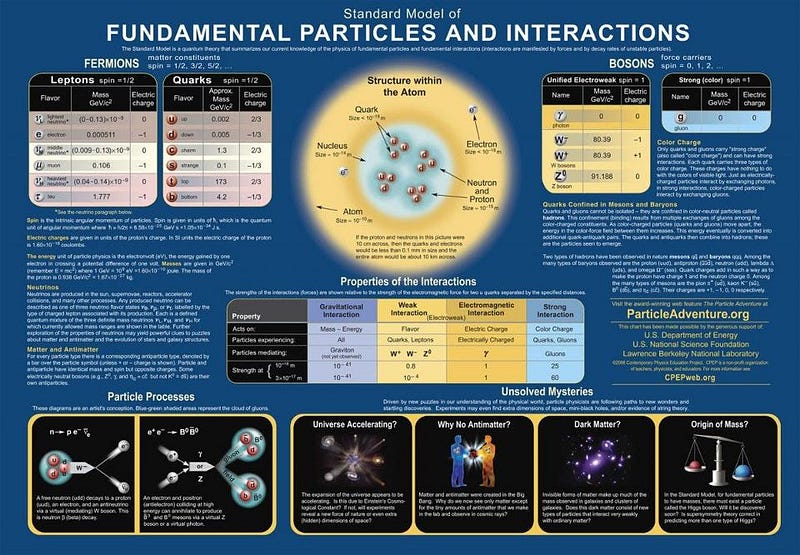
And that’s where the inherent difficulty lies. All of the proposed detection methods rely on another, non-gravitational type of interaction for dark matter, one that has no evidence to suggest it exists. “Sure,” one can argue, “there’s no evidence for it today, but at some point in the distant past, there must have been another interaction in order to create the dark matter in the first place.” And that’s true, but it doesn’t tell you:
- What the interaction was.
- What energy scales are required to create the interaction.
- Whether the interaction results in a coupling to normal matter (or anything in the Standard Model) at all.
- Or, most importantly, whether any of the experiments looking for dark matter today are even on the right path towards detecting it.
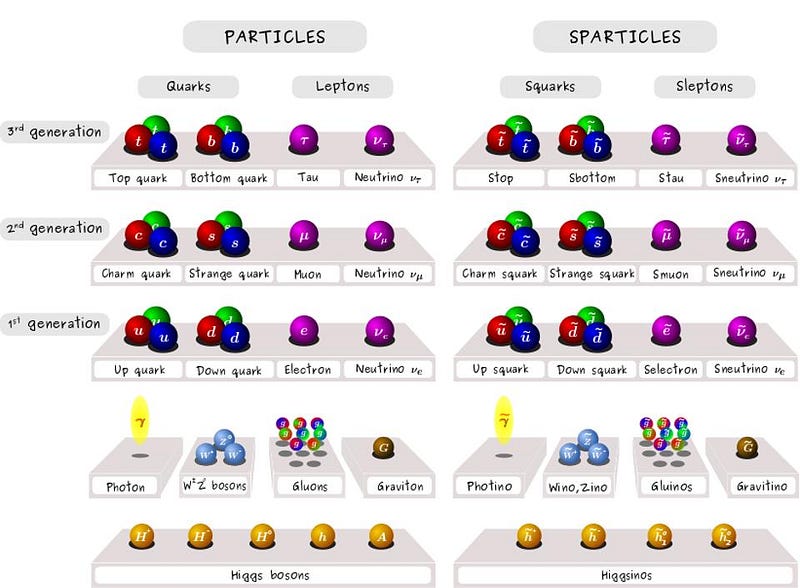
The fact is that most experiments — CDMS, Edelweiss, LUX, Xenon and others — are counting on a very particular model: that dark matter is a heavy, neutralino-like particle known as a WIMP. They assume that it interacts with normal matter through the weak nuclear interaction. They assume the particle will have a mass somewhere in the ballpark of the top quark’s mass. And they assume all of this without one shred of experimental or observational evidence. The only direct evidence at all for dark matter comes from from experiments like DAMA/LIBRA and CoGENT, and even that is at least as likely to be a mundane source of an unidentified signal — such as neutrons — as it is to be dark matter.

Of course it would be phenomenal, groundbreaking and revolutionary if we directly detected dark matter. There’s every reason to perform these experiments, to do these searches, to look for these signatures and to try and better understand the Universe. But the idea that we’re on the cusp of directly detecting dark matter is unfounded. Moreover, there are those contending that a failure of these experiments to turn up dark matter means that it must not exist; that conclusion is equally unfounded. The indirect evidence for dark matter — from astrophysical observations — remains overwhelming, but the direct evidence is feeble at best and non-existent at worst.
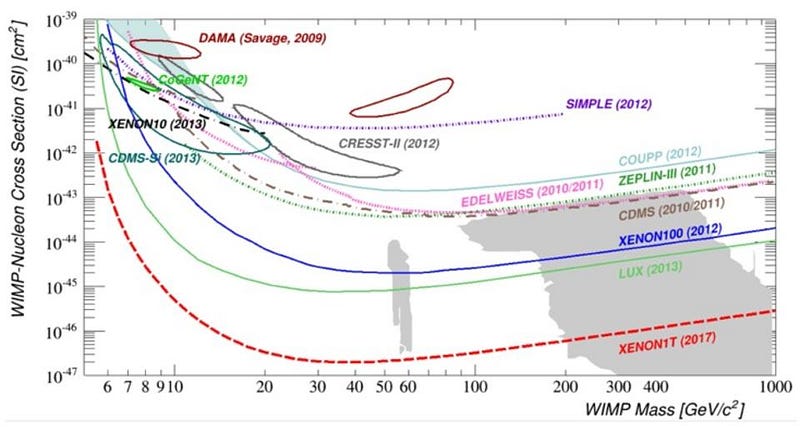
We only know the gravitational properties of dark matter. For everything else, all we have are limits. Even as we continue to push those limits down and down, further and further, there’s no guarantee we’ll arrive at a successful detection. We might be looking in a fruitless way. Yet all we can do is continue to look, and to hope for a discovery. In the absence of a better theoretical motivation, these experiments are the best we can do.
This post first appeared at Forbes, and is brought to you ad-free by our Patreon supporters. Comment on our forum, & buy our first book: Beyond The Galaxy!





